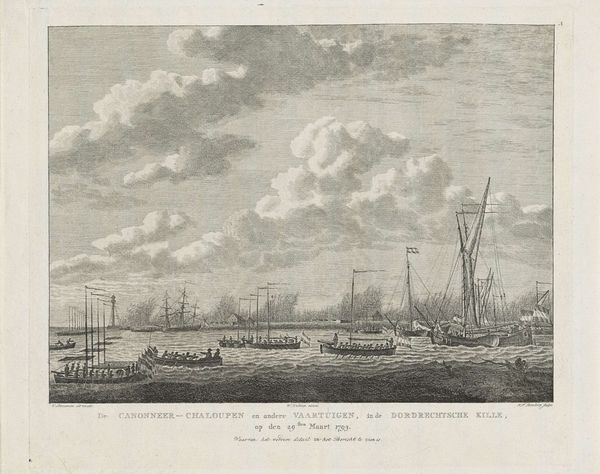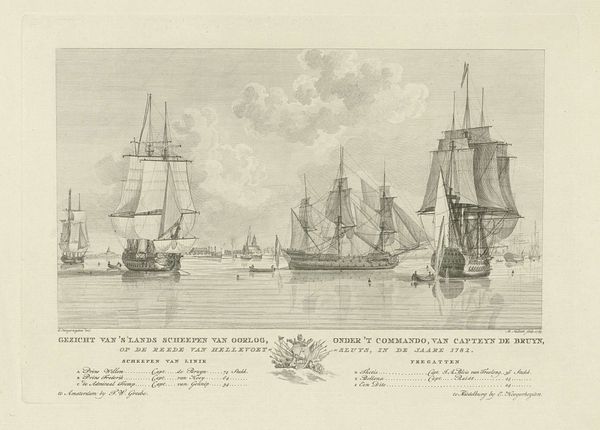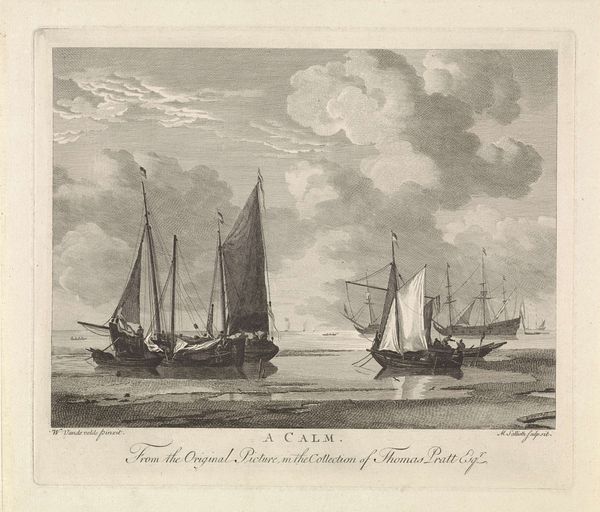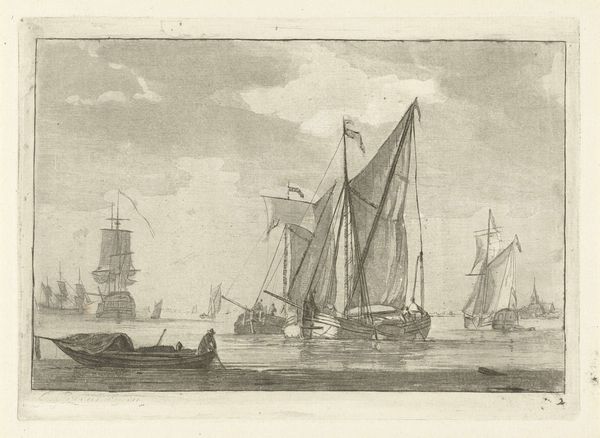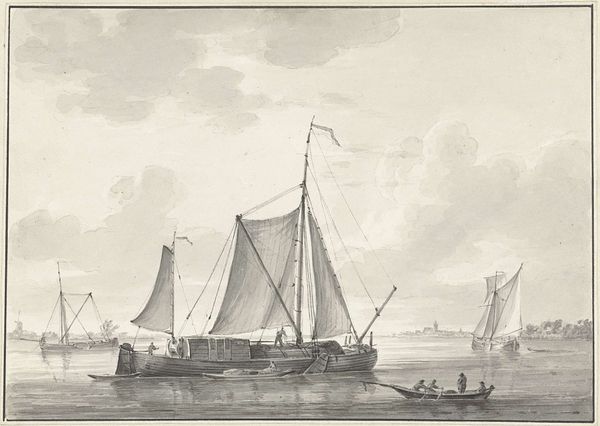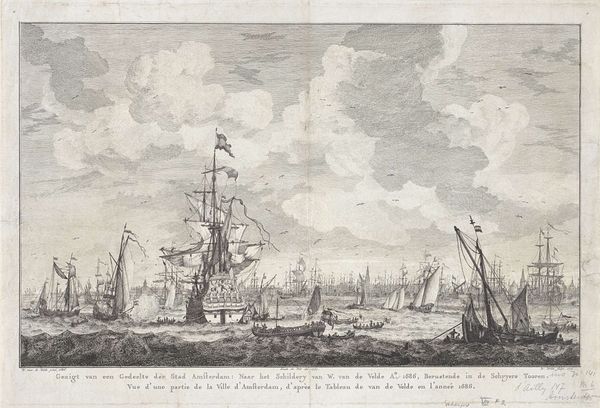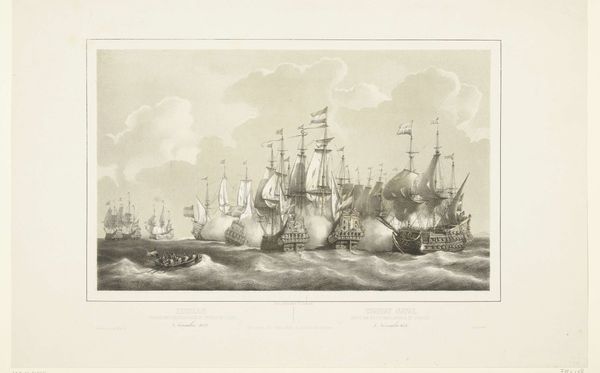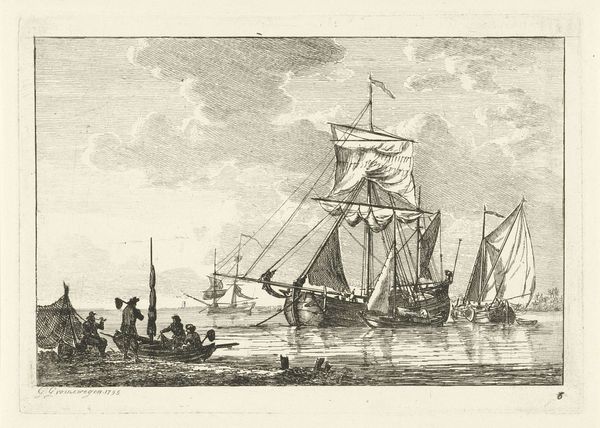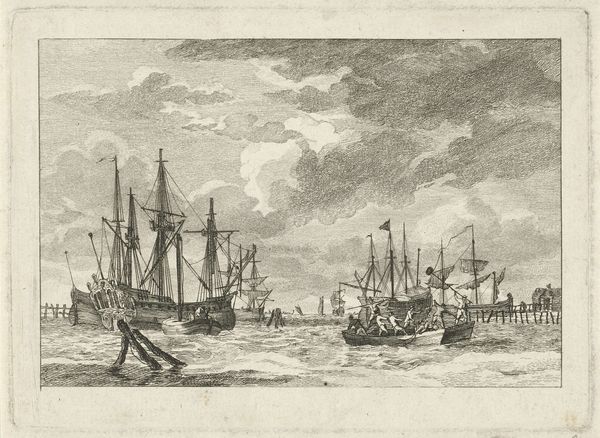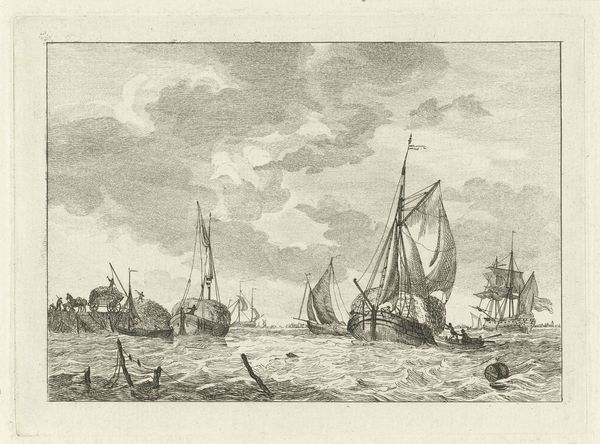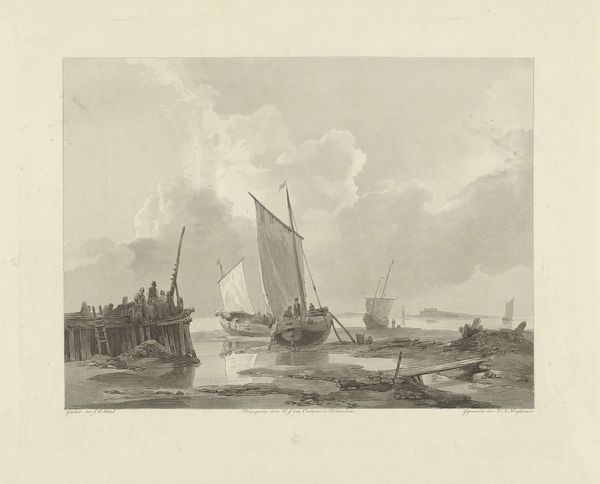
Dimensions: height 296 mm, width 348 mm
Copyright: Rijks Museum: Open Domain
Curator: Oh, this print by Carel Frederik Bendorp just exudes a crisp, salty air. "Armed Pinks near Moerdijk, 1793"—doesn't it conjure a very specific moment? I see the original hanging at the Rijksmuseum. Editor: It does, and the monochromatic palette, it casts a somber light. I see those pinks – armed, heading towards the Moerdijk – but they appear almost ghostly against that sky. A powerful piece of propaganda perhaps? Curator: Ah, yes! Propaganda might be too harsh but "image management" wasn't yet a job title. Those pinks, those flat-bottomed ships were workhorses for the Netherlands. Seeing them armed…well, that presents an explicit warning to adversaries in the Republic, which experienced a constant fear of invasions from multiple countries during that period. What’s interesting is Bendorp wasn’t an eyewitness! This piece memorialized a naval movement that likely derived from secondhand reports from April 5, 1793, as stated at the bottom of the print. Editor: So it transforms something very material—a fleet of ships—into something more ethereal, representative. And water is frequently featured as a source of purification. The Moerdijk, for its role as a defensive outpost against invasion by land, almost becomes a liminal space for purification? Perhaps they serve to purify Dutch claims? Curator: Mmm, I like how you see it. It almost softens the message. Makes it palatable. Of course, genre paintings weren’t particularly known for such bluntness in its propaganda…unless one thinks of those festive militia company paintings in a new light. Editor: Absolutely! So, what endures for you in this tableau, thinking about memory and symbolism? Curator: For me, it’s the precision of the engraving—every wave, every rope. It suggests control, competence, a national capacity for seafaring dominance and resilience. Yet, paradoxically, it captures a single instant. Everything can change, even on water. What are you taking away? Editor: I am caught by the potential, inherent in depictions like these to function as almost psychological landscapes. They reveal our aspirations, as well as our anxieties about our place and future. A bit haunting, really.
Comments
No comments
Be the first to comment and join the conversation on the ultimate creative platform.
